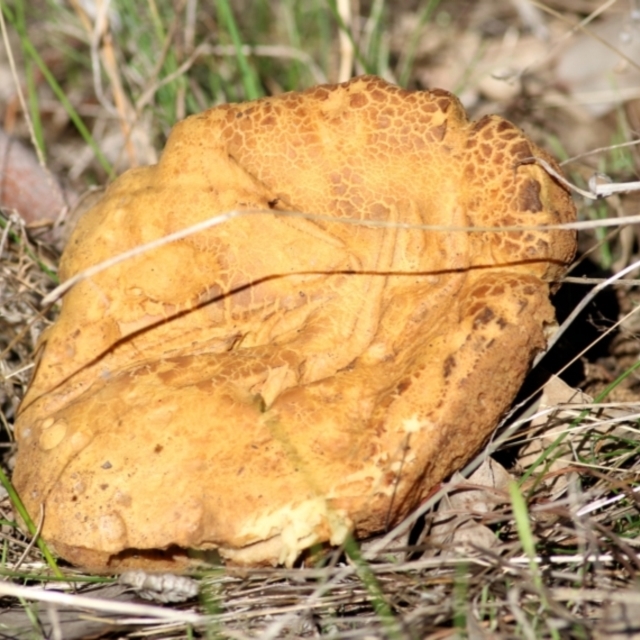Phlebopus marginatus (Giant Bolete)
The fruit body is a bolete that grows on the ground. The cap is brown, smooth and dry and may be cracked; the pore surface below the cap is yellow; the stem is brown and very robust, often of much the same width as height. These are very ordinary colours for a bolete. However, if you see such a bolete with a cap 30 centimetres or more in diameter, you can be confident that you have this species. The caps can grow to a metre in diameter.
On the other hand, fully mature specimens can be as small as 10 cm in diameter and, with the smaller specimens, a microscopic analysis is needed to be sure that you have this species, rather than some other nondescript, brown bolete. A number of other species may have caps to 20 centimetres or so in diameter.
The flesh or pores may bruise bluish when damaged, but some people report no colour change after such damage.
Sometimes you see just one specimen but often a group of them will appear, possibly spread out over many square metres.
This is a native species, the original description of which was published in 1845, based on a specimen collected in Western Australia
The spore print is yellowish brown.
Phlebopus marginatus is listed in the following regions:
Canberra & Southern Tablelands | Albury, Wodonga | South Coast
Species information
- Phlebopus marginatus Scientific name
- Giant Bolete Common name
- Not Sensitive
- Local native
- Non-invasive or negligible
- Up to 1244.68m Recorded at altitude
- Machine learning
- External link More information
Location information
-
Maps
ANBG ANBG South Annex Aranda Bushland Birrigai Bluetts Block (402, 403, 12, 11) Bullen Range Gibraltar Pines Ginninderry Conservation Corridor Higgins Woodland Lower Molonglo Molonglo River Reserve Mount Ainslie Mount Taylor Namadgi National Park Piney Ridge Red Hill to Yarralumla Creek Rob Roy Range Stony Creek Nature Reserve Tidbinbilla Nature Reserve Tuggeranong Hill -
Places
Aranda, ACT Denman Prospect, ACT Kambah, ACT Majura, ACT Yass River, NSW



































































































